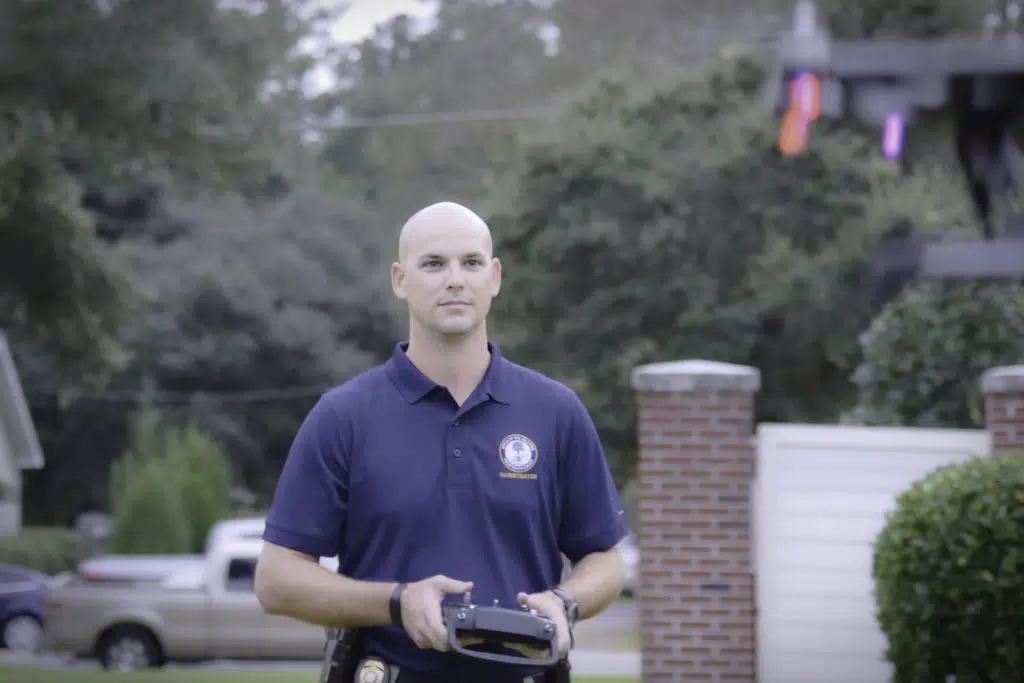The 14th Circuit Solicitor’s Office practices intelligence-led prosecution, which is a strategy rooted in the collection of background information about the people, places and problems that drive crime. Toward that end, the office’s Intelligence Unit serves three primary functions:
- Analyze new cases as arrests are made. By learning more about the criminal histories, gang affiliations, and other experiences of newly arrested defendants, our analysts can assign incoming cases to the appropriate prosecution team. This information also equips our attorneys to begin developing effective legal strategies within hours of an arrest.
- Assisting law enforcement in investigations. We flesh out the story of each defendant by gathering information from cellphones, social media and online databases such as GangNet. This can help law enforcement with their investigations – both pre- and post-arrest – and give our prosecutors evidence they need to prove their cases beyond a reasonable doubt.
- Trial preparation. Our intel team prepares court exhibits that help prosecutors present evidence effectively. That could include drone photos that provide a better vantage point than online satellite images, adding transcription to video and audio files, or enlarging crime-scene photos to highlight details for jurors. They also deliver subpoenas and work with victim advocates to coordinate witnesses’ appearances at trial.
History of the Intelligence Unit
Solicitor Duffie Stone formed his office’s Intelligence Unit in the early 2010s after learning more about its development in other parts of the country.
Intelligence-led policing came to the fore in the early 1990s under New York City Police Commissioner William Bratten. Using a program called COMSTAT, Bratten and the New York City Police Department analyzed data and assigned the police force according to need. This approach coincided with a remarkable and steady decline in New York crime.
Nearly two decades after Chief Bratten’s innovation, Manhattan District Attorney Cyrus Vance became the first to create an intelligence unit inside a prosecutor’s office. It employed investigators, analysts and attorneys to recognize crime trends, target the most prolific offenders and work with community leaders to combat specific problems. Stone knew Vance well from their membership in the National District Attorneys Association and visited the center to learn how it operated.
Stone gathered ideas closer to home, too.
The S.C. State Law Enforcement Division developed a “cyber fusion center,” one of 79 across the country that arose between 2003 and 2007 under the U.S. Department of Homeland Security and the U.S. Department of Justice. The centers are designed to help state, local and federal authorities share information and collaborate on investigations.
Stone was familiar with SLED’s center because in 2007, analysts there prepared for him a chart tracing relationships between gang members in Allendale County. Over the next few years, many of the people on the chart were arrested and convicted for new offenses. It became clear that these people were the crime-drivers in Allendale. It also became clear that the Solicitor’s Office had a daily need for updated information about the organization.
The Solicitor’s Office lacked the financial resources to launch its own fusion center. However, it didn’t need to. The information collected in Columbia was available free of charge, through a secure internet connection. The Solicitor’s Office needed only to hire someone trained in its use.
(STORY CONTINUES AFTER VIDEO)
Integral to prosecution
Today, the Intelligence Unit has expanded to include several analysts and duly sworn law-enforcement officers, who act as investigators. Each morning, analysts arrive early to review the previous day’s arrests across the circuit. They research each new detainee’s criminal history, check their identifications against a national gang database and determine if the defendant has other charges pending. Using our case-management system, they generate a report that shows all new arrests and any old booking information. The report is sent to our prosecutors, who might, for example, use this information to argue for a bond revocation.
The report also goes out to the FBI; the U.S. Bureau of Alcohol, Tobacco, Firearms and Explosives; and the 28 law-enforcement agencies in the circuit. Federal authorities can examine the list for potential federal drug or gun-law offenders; local agencies can enhance their knowledge of criminal activity in neighboring jurisdictions, possibly affording them insight into cases they are investigating. The Intelligence Unit also extracts and deciphers cellphone data and assists local, state and federal agencies with surveillance and arrests.
“Even the biggest agencies in our circuit, like the Beaufort County Sheriff’s Office, look to us for assistance,” Stone said, “but our help is probably best appreciated by the smaller police agencies, like Cottageville, which has only five patrol officers. They don’t have the resources to do the research we do. Of course, they can get help from SLED with things like cellphone extractions, but they’ll usually have a longer wait for results than if they ask us to do certain things.”
Intelligence Unit investigators also continue to work many cases well after initial intake. For example, analysts and investigators pore over social media for relevant clues. Employing a team of community volunteers, they also monitor defendants’ jailhouse phone calls for information that might be useful at trial.
“In case after case, we’ve seen the benefit of incorporating intelligence into our prosecution,” Stone said. “Right now, it’s not something that every prosecutor’s office uses, but I’m convinced that there will soon come a day when every prosecutor’s office does use it.”

